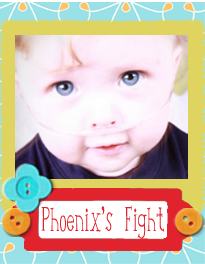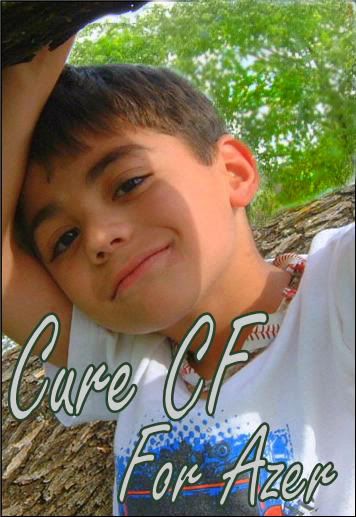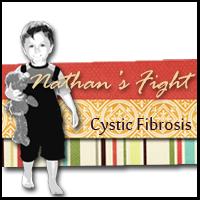Sorry I haven't posted in a few days. I've been having extreme back pain, and sitting at the computer typing does not exactly make it feel better.
I thought I would do a post on complications that can happen after lung transplants (and in some cases any kinds of transplants). And some are unique to CF patients as well. I'm going to divide this post into 2 different posts, so it won't be extremely long.
As I've said previously, even though I've had my share of post transplant complications, I would never trade this side for what it was like prior to transplant (CF Days). I know God gave me a 2nd chance at life for a reason, so he will get me through these complications no matter what.
Recovery after transplant and post-transplant complications is very different for each individual person. I have friends who have had very minimal complications, many complications, and no complications so far.
The main post-transplant complications that we face is rejection of our new lungs. Sometimes the body doesn't recognize the lungs and the surrounding tissue. It treats it as a foreign object of the body, so therefore, rejects it. There are two types of rejection: acute and chronic. In the Fall of 2006, I was diagnosed with "chronic" rejection. With chronic rejection, it's mostly associated with "long-term" rejection and usually does not happen immediately after transplant, only with time. There is no test to "prove" or confirm chronic rejection. There are, however, signs that indicate it. One of the main signs is your breathing/lung function tests dramatically reclining. And that was the indicator for me. Usually, the transplant team or doctors will test you for everything else, before diagnosing you with chronic rejection (such as bronchoscopy, infection, etc.). My lung functions kept declining, and my team of doctors and coordinators could not find anything else wrong.
There are several different treatments for chronic rejection, but not really a cure. Each transplant center has it's own method of treating this type of rejection. Here at UAB, they usually do what is called "photophoresis" and IV administration of Thymoglobulin. I like to describe photophoresis or "photo" as a type of dialysis. You are hooked up to a machine for about 4 hours, in which is removes blood from your body and filters it through the machine, which then returns it to you at the end of the session. The machine exposes your blood's white blood cells to ultraviolet light and a type of chemical, which in turn is supposed to balance your immune system and help your body not to reject the cells anymore. It's very complicated to explain, and I'm not the best person to explain it. For lung transplant patients, you go for two consecutive days, starting out at every 3 weeks. The treatments eventually move out to every 6 weeks, over a period of time. It's not a painful procedure and doesn't really have many side effects, but does take a lot of time and for me, gets very frustrating when you are trying to work and go to school.
Prior to the "Photo" treatments, you are given Thymoglobulin, which is an immune globulin. It suppresses the body's immune system, so it can start "brand new" in building it back up. The entire treatment cycle takes about 15 months. I finished my 15 month cycle in February of 2008, only to have to start it back this May. (I'll explain why later). For some people, the photo treatments greatly improve lung function, other's it stabilizes, and for some, does not help much at all. For me, it stabilized my lung functions somewhat.
Then 2nd type of lung rejection is called "acute." This type is mostly associated with short-term and is present immediately after transplant (usually within the 1st year). It is curable with high doses of IV steroids. Acute rejection is diagnosed by doing a bronchoscopy and biopsying the lung tissue. Indicators of acute rejection also include a drop in lung function tests, and usually the person does not feel that great as well. However, some people can have acute rejection, and feel perfectly fine. Usually in this case, a routine bronchoscopy identified the rejection, and not other indicators. This past April, I had not been feeling that great, and my lung functions had taken about a 15% decrease, which is much more than I can afford for my little body. My transplant doctor decided to do a "bronch" to make sure everything was ok. It ended up showing mild acute rejection. I was treated with high doses of IV steroids (Solumedrol), which cleared the rejection. A follow up bronch was performed a month later.
My transplant team, however, was worried that my lung functions were still not wear they needed to be, even though the acute rejection was gone. The theory was that the photo treatments maybe were preventing me from getting acute rejection and stabilizing me more than we thought. So the decision was made for me to start another round of the photo treatments for another 15 months this past May. I have different opinions on this decision and don't 100% completely agree with it. I'm a full-time student, trying to live my life, work part-time, and it greatly interferes with me trying to live my life. So as of right now, I'm not sure how long I will do these treatments or if I will continue them after the fall semester.
The next post I'll will describe a few other post-transplant complications such as infections, pneumonia, diabetes, etc., that affect patients, including myself.
Goodbye 2025
2 weeks ago




















0 comments:
Post a Comment